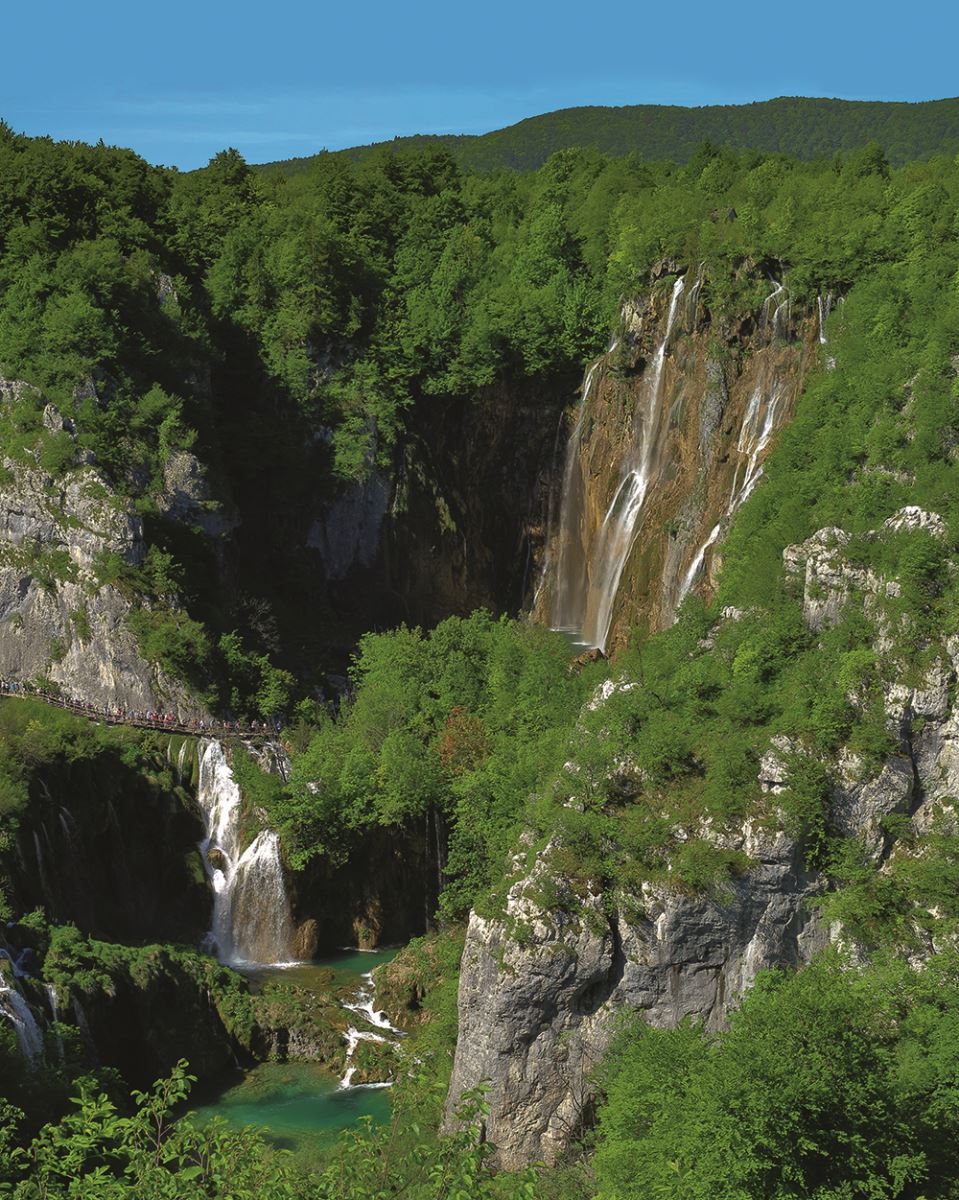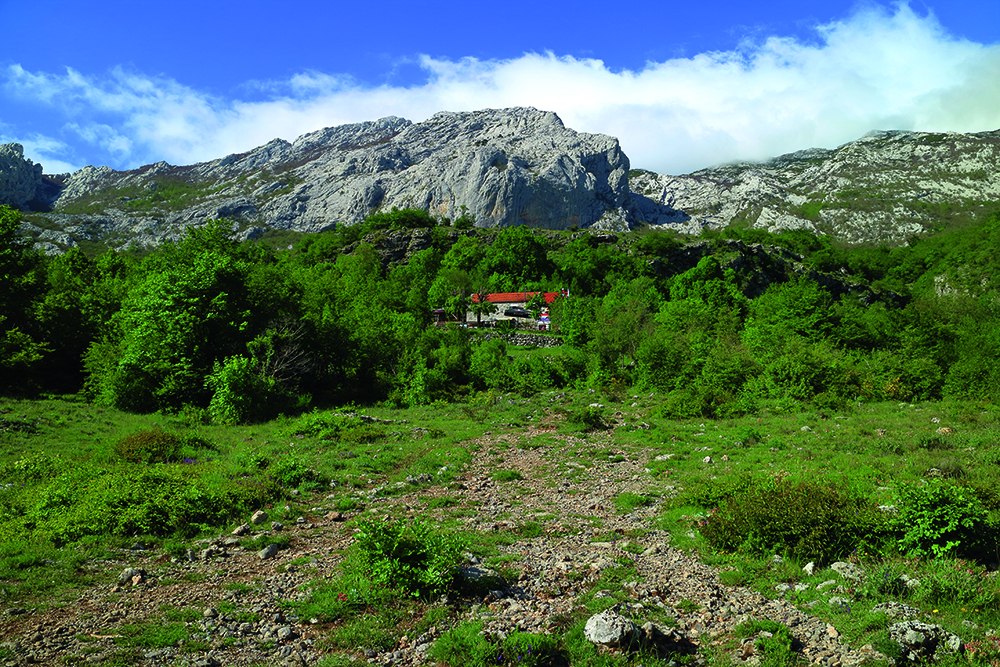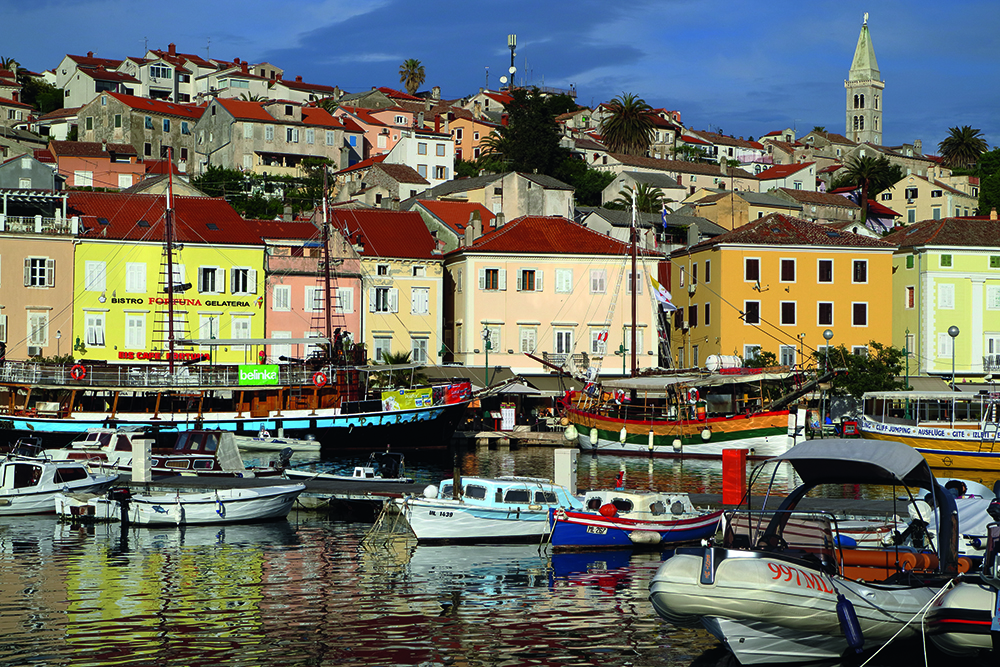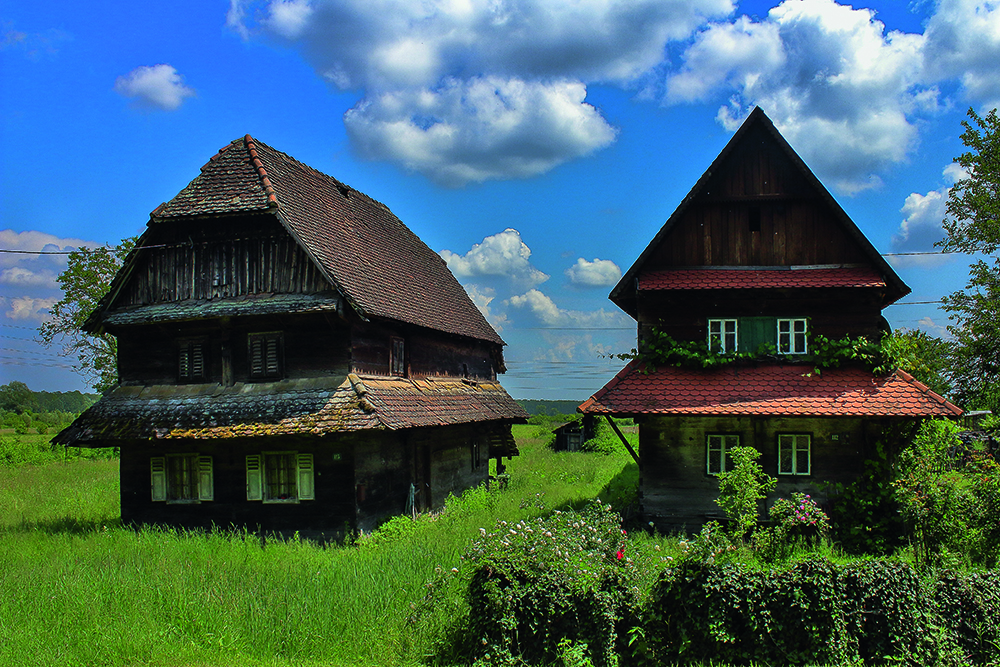Motorhome travel: Croatia's National Parks

We sit on the terrace facing the high, pale peaks of the Velebit mountains of Croatia. We walked here over several hours from the coast on a stone block track up a deep gorge, but are now enjoying cool beers and contemplating a varied menu. There’s no sign of a vehicle to supply any of this. Our host throws his arms towards the two pack animals nearby, “Everything comes here by mule,” he explains.
We’re in one of three so-called mountain huts, traditional homesteads that put walkers and mountaineers up for the night and which have communicated with the busier coastline by donkey for centuries. That’s a four-hour walk, back at the seaside town of Starigrad-Paklenica where our ’van’s been left on a campsite. We’ve booked a night away from it to make it this far. Much further down the gorge, a car park, which is easily accessible to motorhomes and busy with climbers and sunny café tables beside the stream, could otherwise have tempted us to linger.
These mountains are the largest range by area in Croatia and form an impressive spine along 145km (90 miles) of the mainland coastline. For us they divide the different aspects of our trip through Croatia. Probably the idea to visit came via brochures portraying almost coral atoll-like islands that had poured in through my letterbox as a student. Nowadays, we’re equally intrigued by the wild mountains inhabited by bears and vultures and the dramatic waterfalls and mysterious villages of inland Croatia.

Cold and often snowy over winter and renowned for being crowded along the coast in August, Croatia is warm and relaxed in spring and autumn. Once we’d learned that island-hopping with a motorhome is possible, we’d chosen the northern island of Krk for our first stepping stone as this involved less planning with no tickets or timetables and was reachable by an impressively arched bridge. Krk (rolling the r is the key!) is the largest island in the Adriatic and, so we’d heard, the most developed. As we soon discovered, this is relative.
We drove through densely wooded countryside, with development mainly consisting of the billboards that popped up along the road. Among toothy ones advertising dentistry and grilled fish were things to do: diving trips, go-karting and boat rides – and plenty of campsites. We picked Camping Bor, a small, family-run site within easy walking distance of Krk town and found a pitch among olive, fig and cherry trees.
The narrow cobbled streets of the old town are perfect for exploring. One small, dark bar advertised a Roman mosaic that had been discovered under the floorboards and, although our Croatian at this point amounted to, “Hello. Mosaic?” the bar’s owner, who said his only English was Coca-Cola and Marlboro, was careful to explain as much as he could to us using German, photos and plenty of pointing and gesturing of what he knew of the mosaic. Two thousand years ago this had lined the floor of the Roman town’s baths.

Aside from the cheerful harbour and the thrill of seeing fish several metres below us in the clear water, the Romans provided another of our favourite finds in Krk – underground ruins, which are the setting for Volsonis, a bar that managed to inspire a sense of awe as we entered its stone chambers. It was time to island-hop properly. We took a regular ferry crossing over to the long two-part island of Cres and Lošinj, separated by an ancient canal at the cobbled village of Osor. We camped at Mali Lošinj, a colourful harbour town with a tradition of being a health retreat, although today’s holidaymakers (including us) were drawn to the cream cakes, strudel-like pastries and vast ice creams sold along the waterfront.
As walkers, we were thrilled to find the whole island has a great footpath network, ranging from flat waterside strolls to the 588m (1,929ft) ridge of Televrin. We walked along trails of shattered rocks through low trees and past chapels and the ruins of long-abandoned farms. Tattered sheep were semi-feral and scattered away from us. We saw a rare griffon vulture, whose numbers here are improving. During one water stop we were shocked to see a huge snake slither right in front of us. Further on a notice consoled us that the island’s medieval saint, Gaudentius, had banished venomous creatures from the island.
We took a day trip on the local ferry to the nearby car-free island of Sušak, which has the distinction of having some of the very few sandy beaches in Croatia. Our final ferry was particularly momentous as it was a seven-hour journey from Lošinj to the mainland city of Zadar. We considered it a bargain Adriatic cruise! From the start as we waited with other puzzled passengers for fishermen to finish mending nets laid over the gangway, it was clear luxury wasn’t going to be forthcoming. However, the sea was flat and we passed many islands – some just bare and rounded rocks and others high and jagged – and saw dolphins leaping from the ship’s bow wave.
The ferry arrived in Zadar just before midnight and we went on deck to see the city walls lit up over the black sea. After the odd experience of hurriedly reversing off a ferry in the dark, we were back on mainland. At this point we hit the halfway point in our trip at the Velebit mountains. After our hike to the mountain hut, we cooled down in the sea one last time. It was a bit of a wrench, but we turned inland and, one lengthy tunnel later, we were heading east through woodland and open, rock-studded countryside. The quiet road passed scattered farms and villages, with roadside stalls selling local honey and sheep’s cheese.
We were headed to Plitvice Lakes National Park, one of the most visited inland attractions in Croatia and famously spectacular. The Velebit had offered wilderness; Plitvice is nature as a theme park – though a respectful, if crowded, one. Our base was Camp Bear, a small site overlooking a meadow of wild flowers, which offered a shuttle bus to the lakes. The park is an 8km (five miles) line of 16 fish-filled lakes, all joined by a string of waterfalls that tumble through lush greenery into the turquoise water. There are boat trips as well as a network of wooden walkways. Hillside footpaths provide incredible viewpoints and are quieter, too.

Beyond Plitvice, the crowds and resorts vanished. We went to the Lonjsko Polje region, a wide plain where along the River Sava stand traditional wooden houses from the nineteenth century. We were headed to one called Tradicije Cigoc, which offers camping in the garden and which has been restored as a restaurant. Our final stop was the village of Kopacevo, faded but peaceful, attractive and a good base. We received a much appreciated welcome, chatting to the campsite owner, Bela, over grilled venison cevapcici and Šljivovica plum liquor that he announced as ‘medicine’.
During the long drive to get there we were shocked by the level of destruction still evident. In parts, Croatia is still struggling with the aftermath of the 1991-1995 war. Bullet scars tear across the faces of family houses and many buildings are in ruins. Back in Kopacevo village, we visited the neighbouring Kopacki Rit Nature Park, one of the most important wetlands for birds and wildlife in Europe. Here, we hired bikes and cycled along the raised river banks. Purple herons and eagles flew overhead, cuckoos called and water snakes could be seen among the irises and lily pads.
The nearby town of Osijek is well set up for cyclists and has a vibrant old town with a cobbled square where piano music drifted from an open window. At the easternmost point, this was the end of our time in Croatia. We hadn’t even touched on the capital, Zagreb, or the myriad islands hugging the coast near the famously beautiful city of Dubrovnik. As if we need any excuse to come back…
This feature was originally published in the March 2018 issue of MMM magazine. Want to read more like it? Subscribe to MMM magazine for your monthly dose of motorhome travel inspiration.






.jpg)




Recent Updates
Engine management lights: all you need to know
What is the engine management light? What does it mean, and what do I have to do? ...
Motorhome air suspension: all you need to know
Motorhomes are heavy and the additional weight of equipment and height of the bodywork can increase the loads ...
Motorhome WiFi: how to get better motorhome internet
Staying connected on the move is more and more essential, so relying on campsite WiFi isn't an option – here ...
A class of their own - our guide to A-class motorhomes
Thinking of trading up to an A-class, or even going straight to the top of the motorhome tree? We guide you ...
Explore overseas on a motorhome dream tour
Enjoy exotic travel in a campervan or motorhome by hiring, swapping with someone else or exporting your ...
Motorhome water systems: everything you need to know
On-board water is an important part of every motorhome – here’s everything you need to know ...
Campervanning in Europe: what you need to know
Whether you're planning a leisurely drive through the French countryside, navigating bustling city streets in ...
Campervan security: all you need to know
With thefts on the increase, it’s important to know how to keep your campervan secure and prevent campervan ...
Campervan furniture: everything you need to know
Our campervan experts guide you through all the essentials for your campervan, including tables, chairs, ...
Campervan finance: how to fund your purchase
Here we look at the different types of campervan finance available, to help you decide what’s the best option ...
Other Articles
Britain’s best used motorhomes
Want a great motorhome without paying the premium for a new one? Here's a guide to the best you can get in the pre-owned market for each layout, ...
Which motorhome? Choosing the perfect motorhome for you
Choosing a motorhome or campervan is one of the biggest buying decisions you’ll ever make, so it's important ...
Campervan washroom essentials: stay fresh on the road
Our guide will take you through the campervan washroom essentials you'll need so you're well-prepared for ...
Dogs in campervans: all you need to know
Follow our advice and your dog will enjoy campervanning as much as you do ...
Electric campervans: all you need to know
Our guide will take you through everything you need to know about electric campervans and what the future ...
Motorhome electrics: a complete guide to your motorhome electrical set-up
Motorhome electrics can dramatically enhance the convenience and comfort of your vehicle – but they can be ...
Lighting for campervans: all you need to know
We guide you through all the lighting options available for you and your campervan, including interior ...
Electric bikes for motorhomes: our ultimate guide
Read our comprehensive guide to electric bikes for motorhome owners, helping you add electric power to your ...
Our guide to 'cheap' motorhomes in 2024
If you're on the hunt for an affordable new motorhome, this is the best place to start – we've rounded up a ...
Campervans in winter: all you need to know
Here's your guide to preparing your campervan for the colder months, whether you will be using it or putting ...